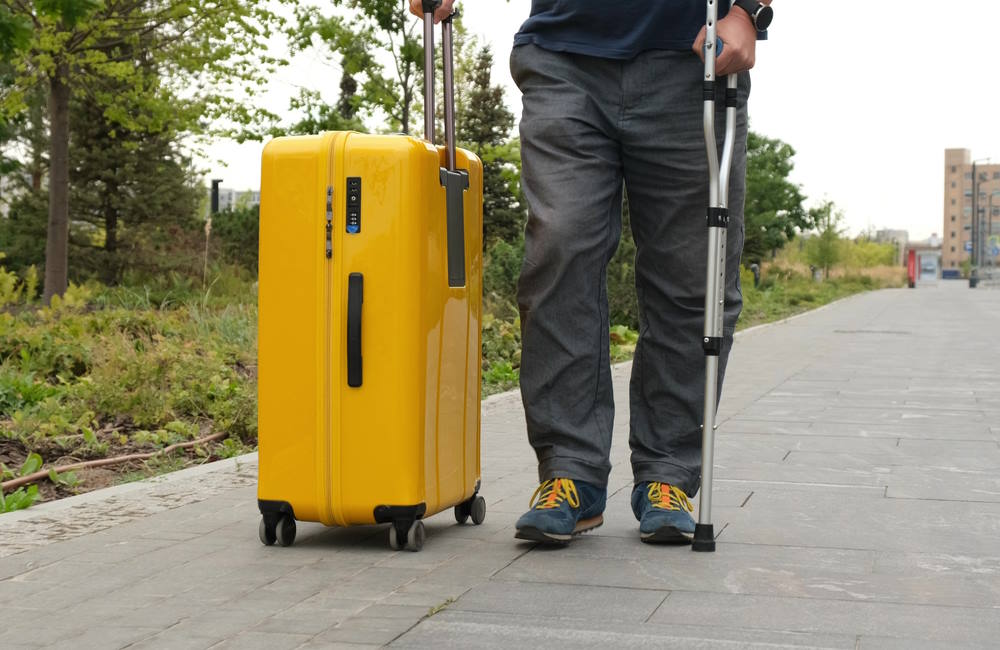
It’s possible to fly with a broken leg or any other broken or fractured bone if a doctor clears you for flying. However, there are rules and regulations that everyone should know about, as well as best practices to make the trip as comfortable as possible.
The first, more important step is getting the green light to fly from a physician. That includes your regular physician at home or a doctor in another location if you are injured while on vacation and require medical reparation.
Experienced flight nurses like those who work for Flying Angels have years of experience in aviation physiology and understand how to manage medical treatment for those with many different illnesses and conditions, including broken bones.
Can I Hire a Nurse to Fly With Me?
Best Practices To Fly With a Broken Leg
The following provides an overview of the process you must go through if you want to fly with a broken leg. Keep in mind that a non-emergency medical transport company deals with many of these issues if you decide to fly with a flight nurse.
Speak With Physician
Do not book a flight until a physician gives you clearance to fly. This is especially an issue if the broken or fractured bone happened recently. In the first days after a break occurs, swelling is a frequent issue and may worsen if you sit on a long flight. The chance of a blood clot may increase with a broken leg, too, especially on a long flight. Follow whatever advice they give you and wait until they decide you may safely travel.
Contact the Airline
Reach out to the airline and find out if they have any rules prohibiting people from flying with the type of cast you have on your leg. It’s also possible you may need to purchase an extra seat in order to stretch your leg out during the flight. This is also the time to make any special requests you might have, such as requiring a wheelchair. Also, when booking the flight, request a bulkhead seat for more leg room, or at least an aisle seat.
Medications
Pack any medication you are taking for the broken leg in your carry-on bags, not your checked-in luggage. Make sure to have water available so you can take your pills when necessary.
Flying with Oxygen & Medications
Extra Time
Arrive early at the airport to give yourself extra time to get through check in and security. You will likely need extra time at security, as you can expect them to physically check out your cast, including the possibility they will swab it to detect explosives. If you use crutches or a wheelchair, they also will go through the metal detector.
Boarding
Airlines provide a window early on in boarding for those with special conditions – including those with a broken leg – to board before anyone else, allowing you to get situated before the main rush of passengers boards the plane.
At any point, don’t hesitate to ask for help from airport or airline personnel. If you do not fly with a nurse, consider bringing someone to the airport with you to help get to security (or to the gate if allowed). While obviously not an ideal situation, you can fly with a broken leg if you take the proper medical precautions and follow best practices at the airport and on the plane. You also want to consider hiring a flight nurse who can handle many of these issues for you, as well as give you the peace of mind of having an experienced medical care provider with you throughout your trip.